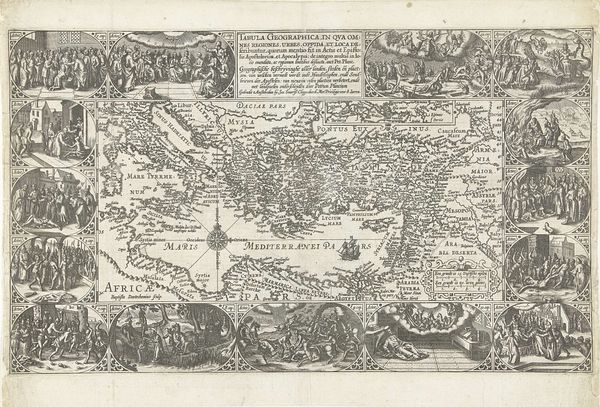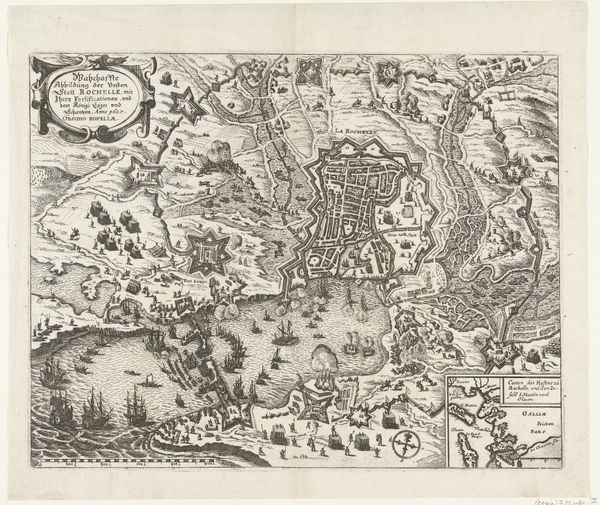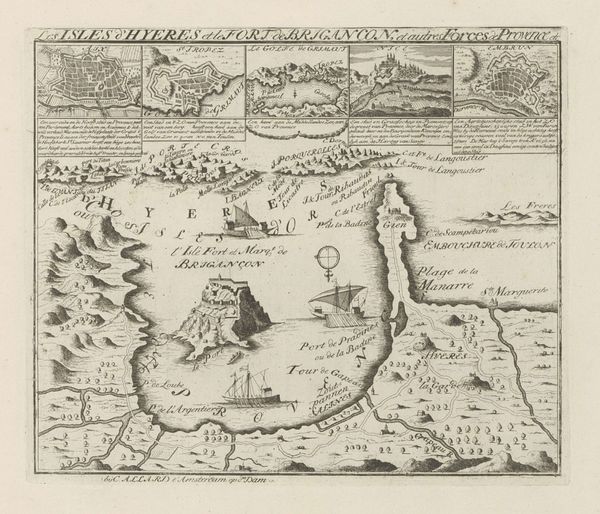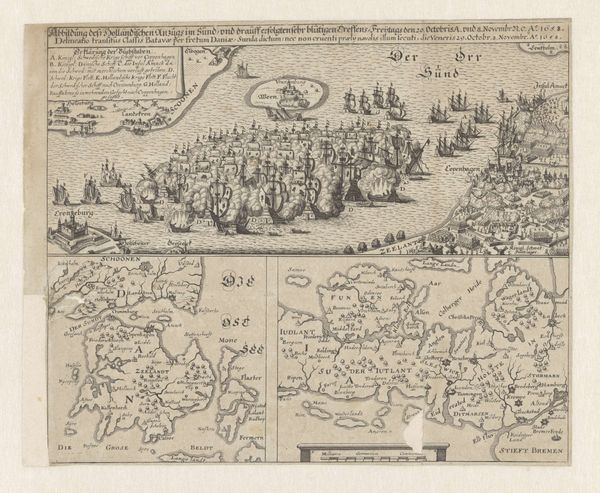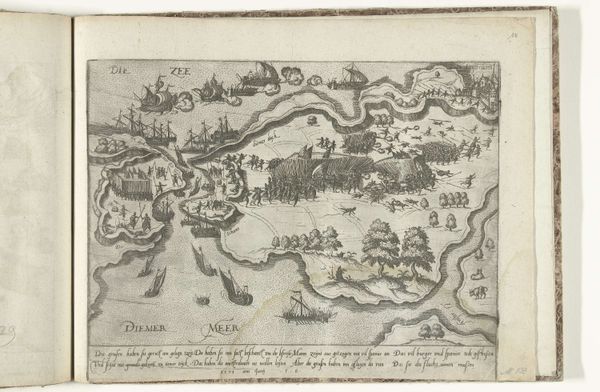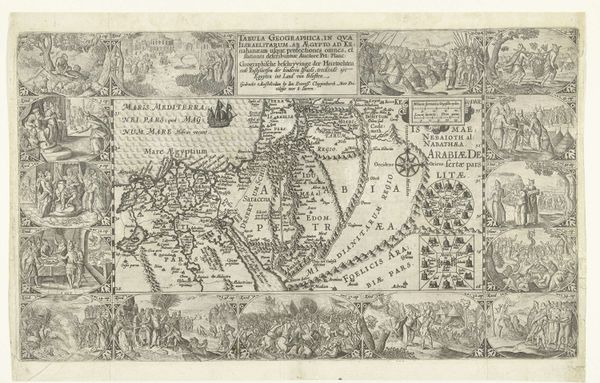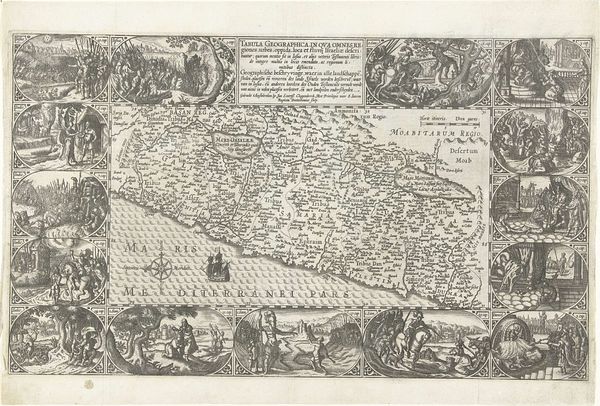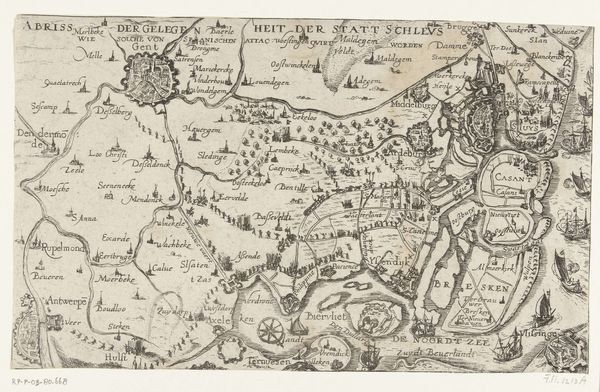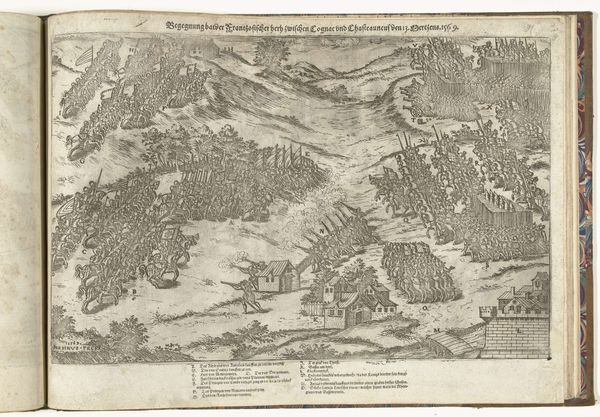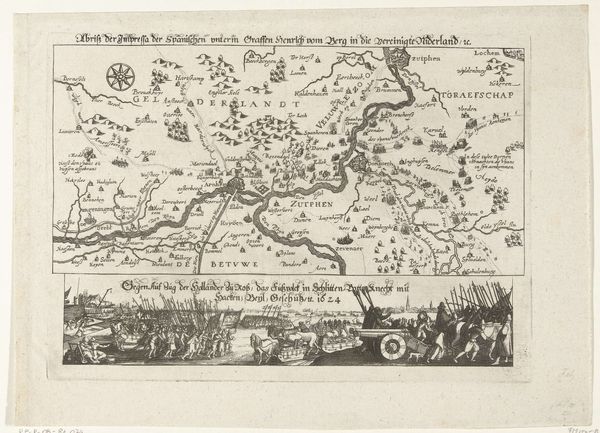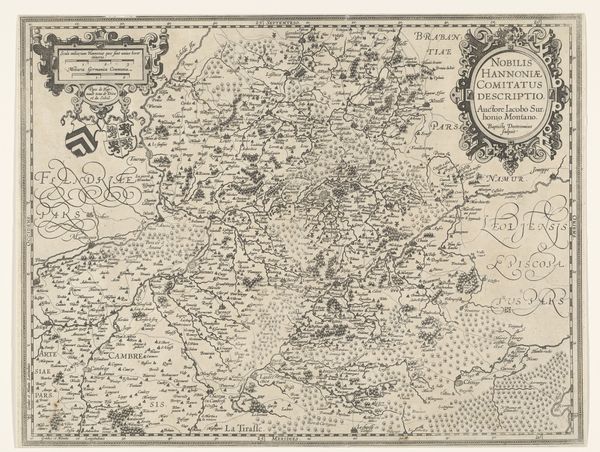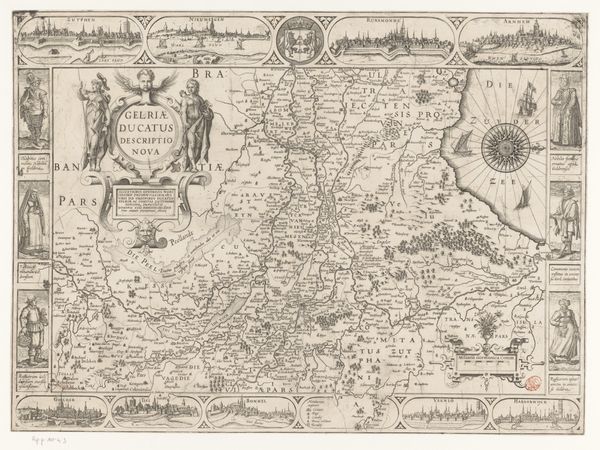
print, engraving
#
baroque
# print
#
cityscape
#
history-painting
#
engraving
Dimensions: height 343 mm, width 436 mm
Copyright: Rijks Museum: Open Domain
Curator: Here we have "Aanval van de Turken op Malta," or "Attack of the Turks on Malta," an engraving by Antonio Francesco Lucini dating back to 1665. What are your initial thoughts? Editor: Well, it's certainly striking. The sheer density of detail is overwhelming. It feels less like a map and more like an abstracted landscape crammed with conflict. Curator: Let's consider the materiality of the print. As an engraving, this piece demanded considerable skill and labor to produce. The fine lines suggest a painstaking process, each etched groove meticulously carved into a metal plate. Its wide availability in printed form highlights the burgeoning culture of information dissemination and also underscores a potential sense of dread or anxiety across Europe about this attack. Editor: That labor echoes in the complexity of the symbolism. Above Malta, classical figures sit enthroned on clouds, a visual shorthand for divine oversight or perhaps even intervention. Look how Malta is itself represented as almost organic. Curator: The engraver’s craft clearly prioritizes factual information and political statement, less than it represents spatial accuracy and geographic realism. Notice also, the sea teeming with ships. Editor: Indeed. That crowded seascape mirrors the turbulent history of Malta, a perpetual crossroads of Mediterranean power struggles. The image feels weighted. And the ships... each tiny vessel suggests so much individual drama in service to geopolitical tension. And it seems that a large attack force may result into some sense of anxiety in the western Europe in the 17th century. Curator: Exactly. The act of making, distributing, and consuming an image like this played a direct role in shaping contemporary perceptions of conflict and identity. It allowed to know how different populations saw such events. The print is itself evidence of early forms of media and their ability to stir emotions around themes such as war, politics, and geography. Editor: Looking at it again, I am struck by how art acts like cultural memory and encodes a whole history within its lines. These icons outlive the original attack, serving as a stark, sobering, and potent testament to the realities of conflict. Curator: I think analyzing how these types of materials contribute to historical awareness is the key for understanding past historical narratives. Thanks for that interesting talk!
Comments
No comments
Be the first to comment and join the conversation on the ultimate creative platform.
